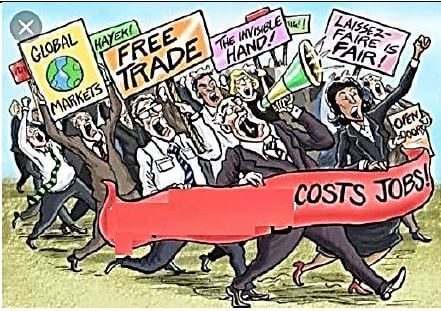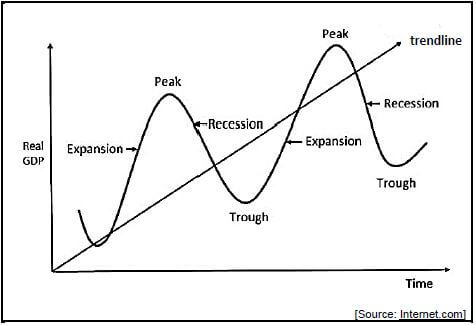ECONOMICS PAPER 1 GRADE 12 QUESTIONS - NSC EXAMS PAST PAPERS AND MEMOS JUNE 2019
Share via Whatsapp Join our WhatsApp Group Join our Telegram GroupECONOMICS
PAPER 1
GRADE 12
NSC EXAMS
PAST PAPERS AND MEMOS JUNE 2019
INSTRUCTIONS AND INFORMATION
- Answer FOUR questions as follows in the ANSWER BOOK:
- SECTION A: COMPULSORY
- SECTION B: Answer TWO of the three questions.
- SECTION C: Answer ONE of the two questions.
- Number the answers correctly according to the numbering system used in this question paper.
- Write the number of the question above each answer.
- Read the questions carefully and start each question on a NEW page.
- Leave 2–3 lines between subsections of questions.
- Answer the questions in full sentences and ensure that the format, content and context of your responses comply with the cognitive requirements of the questions.
- Answer only the required number of questions. Answers in excess of the required number will NOT be marked.
- Use only blue or black ink.
- You may use a non-programmable pocket calculator.
- Write neatly and legibly.
QUESTIONS
SECTION A (COMPULSORY)
QUESTION 1
1.1 Various options are provided as possible answers to the following questions. Choose the correct answer and write only the letter (A–D) next to the question number (1.1.1–1.1.8) in the ANSWER BOOK, for example 1.1.9 D.
1.1.1 To enjoy the advantages of efficient markets, countries should rely on the principle of ... advantage.
- competitive
- convenient
- comparative
- relative
1.1.2 Goods which are regarded as socially harmful are known as ... goods.
- merit
- demerit
- capital
- public
1.1.3 The banks are allowed by the SARB to occasionally change the minimum cash balance. This is known as …
- interest rate
- moral suasion
- cash reserve requirement
- open market transactions
1.1.4 When the demand is low and unemployment high, the government can ...
- decrease taxes.
- decrease government spending.
- decrease government spending and decreasing taxes.
- increase taxes.
1.1.5 Countries with fundamental balance of payments problems can apply for financial support from the ...
- International Monetary Fund.
- Federal Bank.
- World Bank.
- Reserve Bank.
1.1.6 Goods of which there is a complete supply or none, e.g. defence is called ... goods.
- collective
- public
- private
- community
1.1.7 Which ONE of the following can cause a deficit on the balance of payments?
- Inward foreign investments
- Increase in foreign currency reserves
- Decline in mineral exports
- Increase in exports
1.1.8 Economic integration where member countries agree on a common foreign economic policy is called a ...
- free-trade area.
- customs union.
- common market.
- economic union. (8 x 2) (16)
1.2 Choose a description from COLUMN B that matches the item in COLUMN A. Write only the letter (A–I) next to the question number (1.2.1–1.2.8) in the ANSWER BOOK, for example 1.2.9 K.
| COLUMN A | COLUMN B |
| 1.2.1 Economic growth 1.2.2 Bureaucrat 1.2.3 Monetary policy 1.2.4 Economic equity 1.2.5 Real business cycle 1.2.6 Globalisation 1.2.7 Free floating 1.2.8 Disequilibrium |
(8 x 1) (8) |
1.3 Give ONE term for each of the following descriptions. Write only the term next to the question number (1.3.1–1.3.6) in the ANSWER BOOK. Acronyms and abbreviations will NOT be accepted.
1.3.1 A document showing anticipated revenue and estimated expenditure.
1.3.2 A deliberate increase in the value of a currency.
1.3.3 A phase associated with increased profits in the business cycle.
1.3.4 This is paid to producers to reduce the costs of production and encourage the production of goods and services.
1.3.5 A financing instrument distributed among countries of the International Monetary Fund.
1.3.6 A minimum level of consumption that takes place even if the consumer has no disposable income. (6 x 1) (6)
TOTAL SECTION A: 30
SECTION B
Answer any TWO of the three questions in this section in the ANSWER BOOK.
QUESTION 2: MACROECONOMICS 40 MARKS – 30 MINUTES
2.1 Answer the following questions:
2.1.1 Name TWO demand reasons for international trade. (2 x 1) (2)
2.1.2 Why does the government levy high taxes on demerit goods? (1 x 2) (2)
2.2 Study the cartoon below and answer the questions that follow.
Producers and consumers are free to buy goods and services from anywhere in the world, without the interference of government. Regionalisation, in the form of trade blocs, makes use of free trade and protection with one another. Member countries pursue free trade with one another but apply trade restrictions outside their bloc e.g. NAFTA and Mercusor. 
2.2.1 Which trade policy is referred to in the above cartoon? (1)
2.2.2 Name any member country of the Mercusor trade bloc. (1)
2.2.3 Describe the term free trade. (2)
2.2.4 Briefly explain innovation as an argument in favour of free trade. (2)
2.2.5 How will protection of natural resources favour local industries? (2 x 2) (4)
2.3 Study the table below and answer the questions that follow.
NATIONAL ACCOUNTS IN Rbn
At current prices | 2016 |
Primary sector | 371 268 |
Agriculture, forestry and fishing | 84 662 |
Mining and quarrying | 286 606 |
Secondary sector | (A) |
Manufacturing | 452 326 |
Electricity, gas and water | 125 377 |
Construction | 138 917 |
Tertiary sector | 2 316 605 |
Gross value added at basic prices | 340 4493 |
2.3.1 Name the method used to calculate GVA in the above table. (1)
2.3.2 Name any activity that falls under the tertiary sector. (1)
2.3.3 Briefly describe the term GVA at constant prices. (2)
2.3.4 Calculate the contribution of the secondary sector (A). Show all calculations. (2)
2.3.5 Highlight the importance of the national account aggregates. (2 x 2) (4)
2.4 Differentiate between endogenous and exogenous reasons. (4 x 2) (8)
2.5 How will corruption impact negatively on the efficiency of the government? (8) [40]
QUESTION 3: ECONOMIC PURSUITS 40 MARKS – 30 MINUTES
3.1 Answer the following questions.
3.1.1 Give TWO examples of leakages. (2 x 1) (2)
3.1.2 What effect will ad valorem tariffs have on luxury items? (1 x 2) (2)
3.2 Study the graph below and answer questions that follow.
BUSINESS CYCLE 
3.2.1 How long does a Juglar cycle last? (1)
3.2.2 What is the slope of the trendline in the above graph? (1)
3.2.3 Describe the term composite indicator. (2)
3.2.4 Explain briefly the government’s aim with business cycle policies. (2)
3.2.5 How can the length be used in forecasting of business cycles? (2 x 2) (4)
3.3 Read the extract below and answer the questions that follow.
Eskom CEO Phakamani Hadebe says that 2018 has been a challenging year for the power utility and the clean-up process has been time consuming, but necessary. Eskom says there is no quick fix to dealing with its myriad of problems following years of corruption, but it remains optimistic that with time, it can get on top of its challenges. Eskom is in a dire financial situation and needs over R70 billion to meet its financial obligations. [Source: NEWS 24]
3.3.1 Which body regulates the supply of electricity in South Africa? (1)
3.3.2 Name ONE problem that the power utility has been faced with for years. (1)
3.3.3 Describe the term parastatals. (2)
3.3.4 Briefly explain ineffectiveness as a characteristic of public sector failure. (2)
3.3.5 How can the South African government address the lack of accountability? (2 x 2) (4)
3.4 Discuss goal bound and demand biased as features of the fiscal policy. (4 x 2) (8)
3.5 How can open market transactions be used to smooth out business cycles? (8) [40]
QUESTION 4: MACROECONOMICS AND ECONOMIC PURSUITS 40 MARKS – 30 MINUTES
4.1 Answer the following questions.
4.1.1 Name TWO arguments in favour of privatisation. (2 x 1) (2)
4.1.2 How will the SARB correct an overvalued rand? (1 x 2) (2)
4.2 Study the table below and answer the questions that follow.
BALANCE OF PAYMENT
| R BILLIONS | |||
Current Account | 2016 | 2017 | 2018 |
Merchandise exports | 1074 | 1089 | 1056 |
Net gold exports | 50 | 68 | 77 |
Merchandise imports | 1066 | 1106 | 1158 |
Trade balance | 58 | 51 | -25 |
Net service, income and current transfer payments | -150 | -181 | -204 |
Balance on the current account | -92 | -130 | -229 |
[Adapted from SARB QB, June 2018]
4.2.1 Why is gold listed as a separate item on the current account? (1)
4.2.2 What trend is shown by the current account from 2016 to 2018? (1)
4.2.3 Briefly describe the term trade balance. (2)
4.2.4 Explain the purpose of the current account. (2)
4.2.5 How can the government use our currency to improve the trade balance? (2 x 2) (4)
4.3 Read the extract and answer the questions that follow.
VAT INCREASE !!! The Minister of Finance announced in his Budget speech that the VAT rate will increase by 1% to 15 % with effect from 1st April 2018. This is expected to raise additional revenue of 22 billion. [Adapted from News24, 23 February 2018] |
4.3.1 Name ONE example of an indirect tax. (1) 4.3.2 What is the meaning of personal income tax relief? (1)
4.3.3 What impact will an increase in the VAT rate have on the standard of living of the poor? (2)
4.3.4 Briefly describe the projects the government will engage in with the revenue collected. (2)
4.3.5 How do reduced tax rates contribute to increased government revenue? (2 x 2) (4)
4.4 Briefly explain the measures that can be applied to reduce a deficit on the balance of payments. (4x2) (8)
4.5 Why is the promotion of employment and prevention of dumping important to protect developing countries against overseas competition? (8) [40]
TOTAL SECTION B: 80
SECTION C
Answer any ONE question of the TWO questions in the ANSWER BOOK. Your answer will be assessed as follows:
STRUCTURE OF ESSAY | MARK ALLOCATION |
Introduction
| Max. 2 |
Body
Additional part:
| Max. 26 Max. 10 |
Conclusion
| Max. 2 |
TOTAL | 40 |
QUESTION 5: MACROECONOMICS
- Discuss the role of the various markets in the circular flow without the use of a diagram. (26 marks)
- How does an increase in injections affect the level of equilibrium in national income? (10 marks) [40)
QUESTION 6: MACROECONOMICS
- Discuss import substitution as part of South Africa’s international trade policy under the following headings:
- Reasons
- Advantages
- Disadvantages (26 marks)
- How successful have South African policies been to redress income inequality? (10 marks) [40]
TOTAL SECTION C: 40
GRAND TOTAL: 150